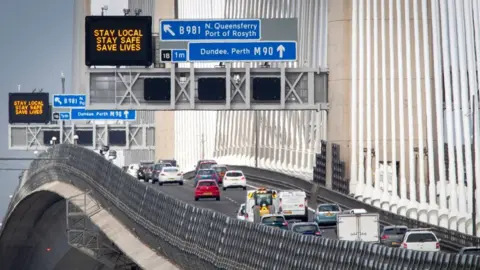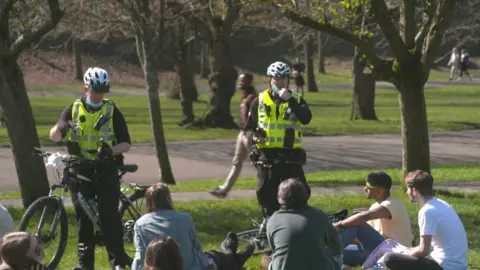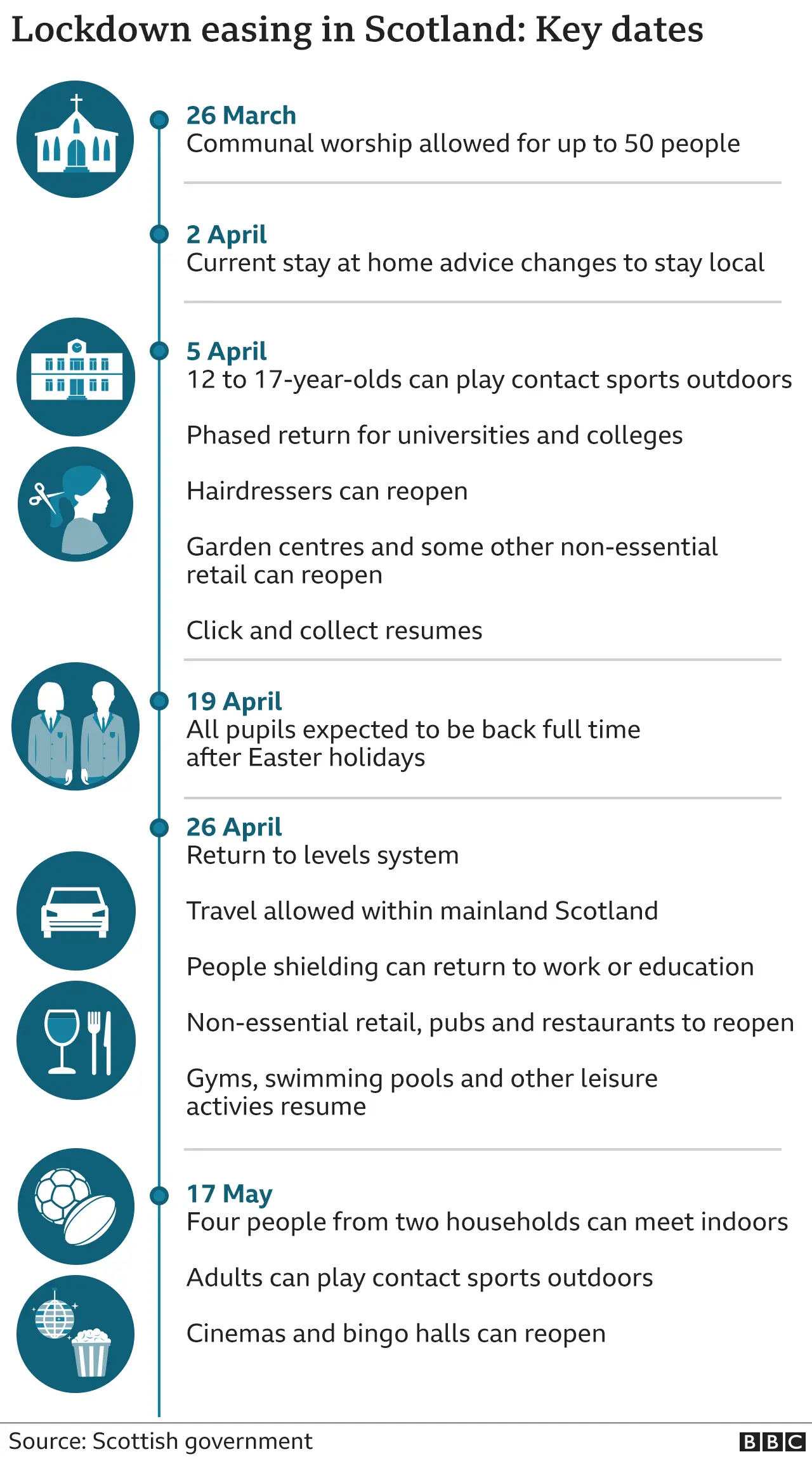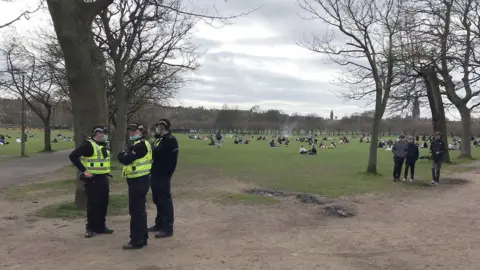Covid in Scotland: Stay at home rule lifted after three months
 PA Media
PA MediaThe stay at home rule which has been in place in Scotland for more than three months has been lifted.
People have been told to "stay local" and to remain within their local authority boundaries for the next three weeks.
First Minister Nicola Sturgeon said the vaccination programme's progress had been "better than we could have dared hope for back at the turn of the year".
However, she also warned that there were "no grounds for complacency".
On Friday another 414 new cases of Covid-19 were reported and four new deaths of people who had tested positive.
Ms Sturgeon said: "It is really important right now that while the vaccination programme continues to be rolled out, all of us remain hyper-vigilant in how we're going about our daily lives."

Police Scotland's Deputy Chief Constable Malcolm Graham issued a warning ahead of the Easter weekend, urging people to stay local unless for essential purposes.
He said: "While Easter weekend is traditionally a time for visiting friends and family, I would urge people to stay local and follow the regulations on gatherings.
"If you are visiting beauty spots within your local area, do so safely and respectfully - leaving no trace of your visit. Please also park responsibly to allow emergency access."
Police in Edinburgh also said increased patrols would continue following a spate of anti-social behaviour incidents on or near public transport.

How are the numbers looking in Scotland?
The Scottish government's weekly State of the Epidemic in Scotland document pulls together the most recent statistics from a range of sources. Here are the key points:
- The R number, which measures the reproduction rate of the virus, is estimated to be between 0.8 and 1, unchanged from the previous week
- An average of 505 cases were reported per day in the last week, a fall of 7% on the previous seven days.
- The number of weekly cases per 100,000 people has fallen from 302 on 8 January to 66 in the week ending 28 March, similar to the rates seen last September.
- Scotland no longer has the highest infection rate in the UK, having been overtaken by Northern Ireland, according to the ONS weekly survey - but the rate remains higher than in England and Wales.
- Average daily deaths per 100,000 of population in Scotland stand at 0.1 - higher than in England, Wales and Northern Ireland where the rate is 0.07
- Clackmannanshire had the highest case rate last week (165 per 100,000). Previously the highest rate was in West Lothian.

Prof Nick Hopkins, who sits on the Scottish government's Covid-19 advisory group, told the BBC's Good Morning Scotland programme there was "a lot to be optimistic about".
He said: "The vaccine rollout gives us enormous cause for hope, but hope is not the same as wishful thinking.
"We need to recognise that there is still a reality out there and we need to be very mindful of those risks and continue to be careful, to monitor our behaviour, to follow the guidelines."

The University of Dundee psychology professor also said the move to "stay local" was very positive.
Prof Hopkins added: "It really does send out the signal that the sacrifices that people have made over the last year, and it's been a long, long year, are actually getting us where we need to be."
Further easing of restrictions in Scotland from Monday will enable barbers, hairdressers, car showrooms, homeware shops and garden centres to reopen.
Shops will be allowed to resume click and collect services.
 Simone Claridge/PA Wire
Simone Claridge/PA WireIn addition, outdoor contact sports for 12 to 17-year-olds can start again and college students will be able to return to in-person teaching for practical subjects.
It is expected that all school pupils will return full-time after the Easter holidays. Those in secondary schools had been attending part-time in recent weeks.
The easing of the level four restrictions in Scotland will have a minimum gap of three weeks between phases, and will be assessed using conditions set out by the World Health Organization.
In February, Prime Minister Boris Johnson announced a four-step plan which could see all legal limits on social contact lifted by 21 June in England.
Each stage in his routemap will be a minimum of five weeks apart, with conditions that must be met before proceeding to the next step.
The stay at home rule in England was eased on 29 March, although the government advice was to "minimise travel".


